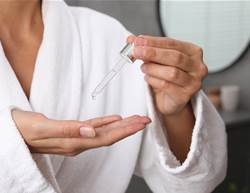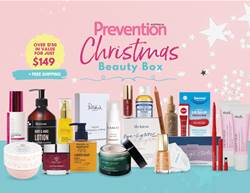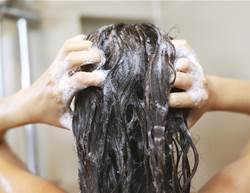If the last time you looked in the mirror, you thought your hair was looking a bit flat and thin, you’re not alone. About 50 per cent of women will experience hair loss in their lifetime.
The cause? According to trichologist Carolyn Evans-Frost, from Absolique Hair Health Clinic in Queensland, there are many contributing factors including childbirth (which can trigger postpartum alopecia), low iron (which affects hair growth at a cellular level), thyroid issues and vitamin D deficiency, plus the stress of daily life. Thankfully, there are ways to improve growth and overall hair health.
Try these expert-approved fixes below.
1. Review your lifestyle
Are you getting enough sleep? Eating well? Feeling stressed? All of these things can affect your hair condition. “Healthy hair grows out of a healthy body,” explains Carolyn. “Stress is a nutrient robber and can imbalance your endocrine system. And lack of sleep can affect body function, inhibiting everything from digestion and healing to detoxifying. Get your body back on track and hair growth should follow.”
2. Check your scalp
“Scalp health doesn’t necessarily affect hair growth,” says Carolyn. “But, when a scalp condition is present, such as dandruff, excess oil or psoriasis, it hinders the hair follicle and hair loss and poor growth may follow.”
The fix? Regularly use a scalp brush, which exfoliates product build-up and oil, and use a scalp cleanser or scrub before you shampoo. Then condition your ends only and apply a topical scalp treatment (such as Évolis Professional Promote Activator) to promote strong hair growth.
3. Use the right product
There are plenty of products on the shelves that not only boost volume, but also help hair grow, says Carolyn. “Volumising products can work well for naturally thin hair, and some boost growth, too, so they’re not just cosmetic. But addressing the underlying hair growth issue is key, whether it’s lifestyle, nutrition or a condition.”
In short? Identify the cause and you’ll know how to treat it. And, if in doubt, chat to your hairdresser or get in touch with a trichologist, who specialises in diseases or problems related to the hair and scalp. It’s only a matter of time before those good hair days return.
4. Adjust your heat settings
Even healthy hair can suffer from excess heat or chemical damage, leading to breakage, dullness and thinness, says Carolyn. Heat styling or blow-drying? Always prep hair with a heat protector first. Similarly, chemically treated hair should be nourished weekly with a hydrating mask to restore moisture and keep it looking fab.









